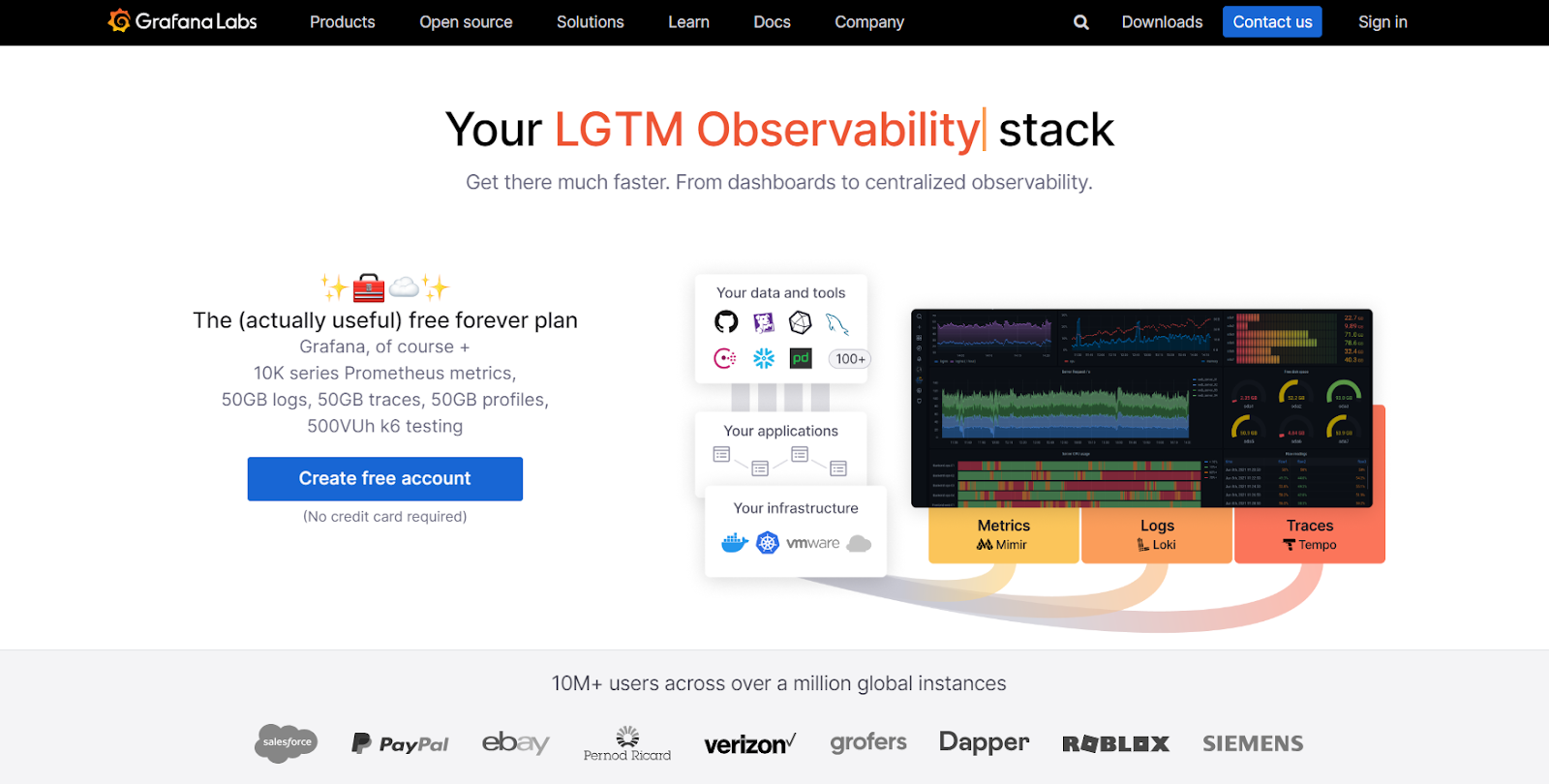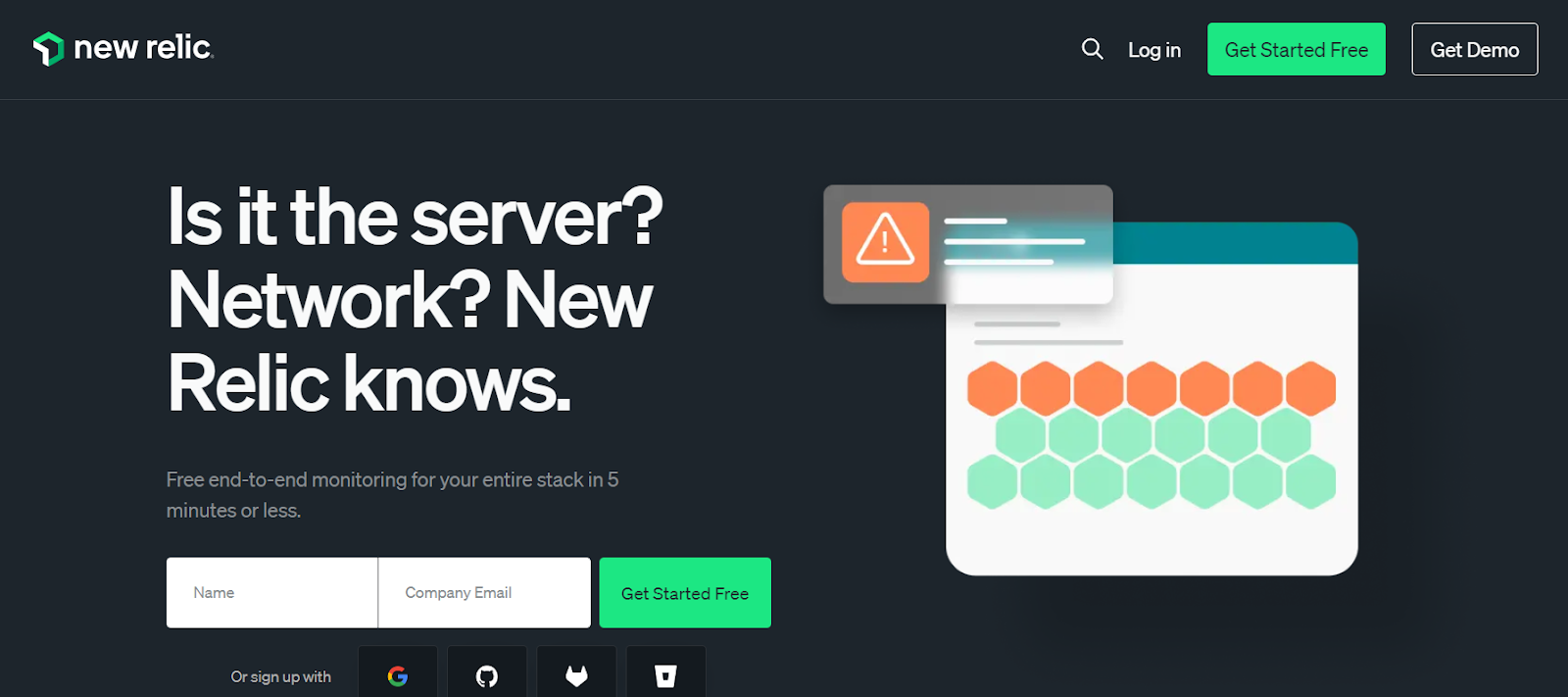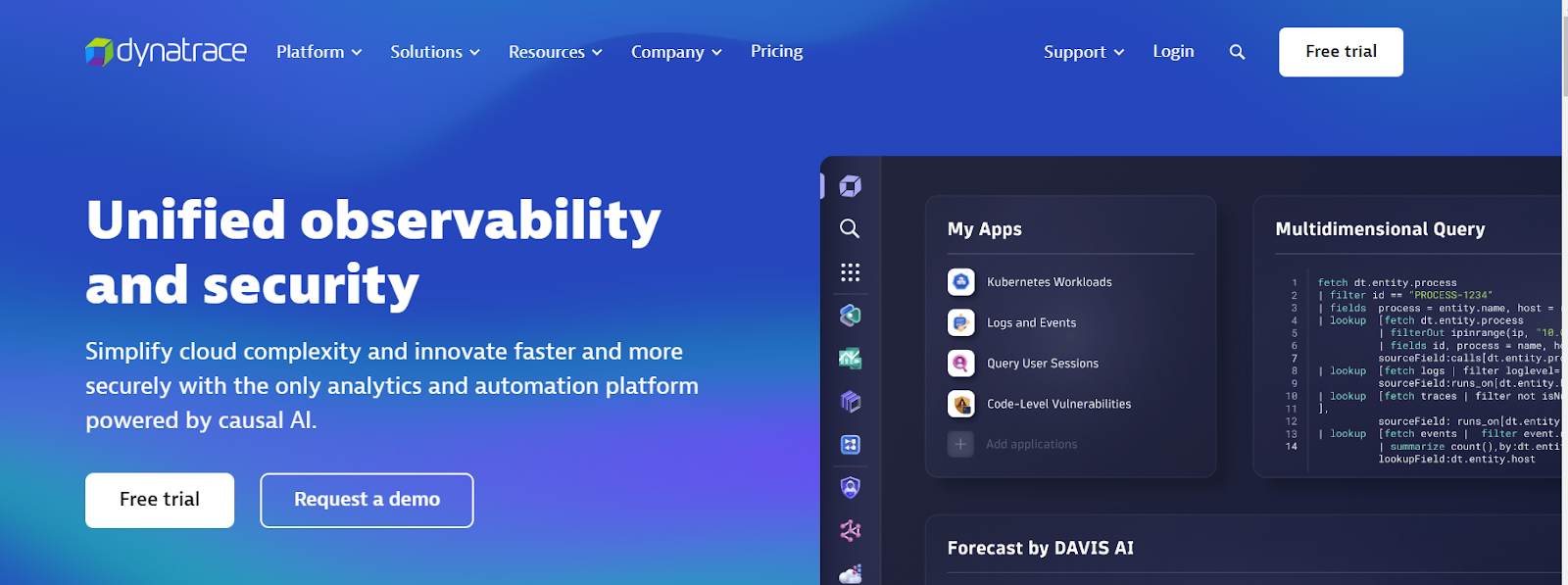Top 5 Data Observability Tools for Efficient Monitoring
Summarize this article with:


Keeping a close eye on your data is crucial in ensuring its reliability and accuracy. Data observability tools help you monitor your data systems to catch problems early and maintain data integrity.
This article is about the top observability tools for keeping tabs on your data. These tools help you monitor your data, spot issues, and make sure everything's working as it should. Whether finding mistakes or ensuring thing's run smoothly, these tools have you covered.
What are Data Observability Tools?
Data observability tools are designed to provide insights into the health, performance, and reliability of your data systems. They enable you to monitor various aspects of your data infrastructure in real time, allowing for proactive detection and resolution of issues. These tools let you collect, analyze, and visualize data metrics, offering a comprehensive view of your data pipelines, processes, and workflows.
Here are some criteria to help you with the right observability tool selection:
- Use Case: Consider your specific data monitoring needs and requirements. Determine the key functionalities and features necessary to address your unique use cases, ensuring that the selected tool aligns with your goals and objectives.
- Budget: Evaluate the cost implications associated with deploying and maintaining the data observability tool. Consider both initial investment costs and ongoing expenses, such as licensing fees, support, and maintenance, to ensure that the selected tool fits your budget constraints.
- Ease of Use: Assess the user interface and usability of the data observability tool to ensure widespread adoption across your operations. Pick a tool that is intuitive and user-friendly, minimizing the need for extensive training and facilitating seamless integration into existing workflows.
- Support and Documentation: Look for a data observability tool that offers comprehensive support and documentation. Consider factors such as vendor authenticity, availability of customer support, and the quality of documentation and resources provided. A reliable support system is essential for resolving issues promptly and maximizing the value of the tool for your operations.
Top Data Observability Tools
By diving into these data observability tools, you'll learn what they do, how they work, and when to use them.
Datadog

The Datadog observability platform offers full visibility into each layer of a distributed environment. There is built-in support for more than 650 third-party integrations. It provides a single pane of glass for troubleshooting distributed systems, optimizing application performance, and supporting cross-team collaboration. Datadog pairs automatic scaling and deployment with intuitive tools that incorporate machine learning for more reliable insights into your applications and infrastructure.
Some key features include:
- Datadog is accessible as a Software-as-a-Service (SaaS) platform, ensuring ease of access and minimal setup requirements.
- The platform empowers you to monitor a wide range of components, including infrastructure, applications, databases, network performance, and the entire DevOps stack. You can utilize its support for user and network monitoring, synthetic monitoring, as well as log and incident management functionalities.
- Open-source agents deployed on your monitored systems collect metrics and events and report them back to the Datadog platform. These agents are versatile and capable of running on both bare metal servers and containerized environments. Datadog also offers its own monitoring agents for broader compatibility.
- Datadog offers tiered subscription plans with features like Infrastructure Monitoring, Log Management, and Application Performance Monitoring (APM). Many plans have sub-tiers to match specific needs.
Grafana

Grafana provides a centralized platform for exploring and visualizing metrics, logs, and traces. The platform includes alerting capabilities while also providing tools for turning time series database data into insightful graphs and visualizations. From a central interface, you can create a rich set of dashboards. These dashboards show telemetric data from a variety of sources, including Kubernetes clusters, cloud services, Raspberry Pi devices, and Google Sheets.
Here are some key features of Grafana:
- Grafana allows you to monitor a variety of aspects, such as infrastructure, applications, data sources, microservices, and third-party platforms, ensuring complete coverage of your environment.
- It utilizes an open-source agent deployed on your monitored devices to collect metrics, logs, and traces. This agent efficiently gathers telemetry data and forwards it to the Grafana platform, regardless of whether it's hosted in the cloud or on-premises.
- Grafana offers deployment flexibility and scalable pricing. Choose between the fully managed Grafana Cloud service for convenient monitoring with minimal setup or the Self-managed Grafana Enterprise Stack for on-premises or cloud deployments. Whichever option you select, there are tiered subscription plans, with the Enterprise edition offering a streamlined version of the Enterprise Stack for on-premises users.
Monte Carlo Data

Monte Carlo offers a cutting-edge observability platform designed to effectively meet your specific monitoring requirements. Its advanced anomaly detection algorithms and machine learning capabilities enable you to proactively identify and resolve data issues, ensuring consistent and accurate data. Integrated with various data sources and platforms, Monte Carlo centralizes your monitoring efforts, empowering you to optimize data processes and make informed decisions based on trusted insights.
Some key features of Monte Carlo include:
- With the real-time monitoring feature, you can track your data as it is generated, allowing you to identify and address potential issues as they occur swiftly.
- Monte Carlo empowers you with a no-code interface, eliminating the need for complex coding to set up and manage data monitoring pipelines.
- It prioritizes data security by adhering to SOC 2 compliance standards. This rigorous certification assures that your data is protected with robust security measures.
New Relic

The New Relic observability platform offers you a suite of tools for full-stack monitoring across applications and infrastructure. It covers Kubernetes, browser, mobile, network, and synthetic monitoring. Additionally, the platform includes log management and error-tracking functionalities. It allows you to integrate with more than 500 third-party technologies and utilizes applied intelligence to provide insights into incident root causes automatically. Moreover, it features CodeStream integration, providing a developer collaboration platform.
Here are some key features of New Relic:
- New Relic is a Software-as-a-Service (SaaS) solution, ensuring easy access and minimal setup.
- You can effortlessly install agents on hosts or within applications to collect performance data and send these metrics to the New Relic platform. Further, it also supports OpenTelemetry, an open-source framework for improving data collection capabilities and compatibility.
- New Relic allows you to scale to meet your needs. Choose from the Free, Standard, Pro, and Enterprise tiers, each offering increasing features and support levels to match your monitoring requirements.
Dynatrace

Dynatrace is an integrated platform for monitoring infrastructure and applications, covering networks, mobile apps, and server-side services. With Dynatrace, you can analyze the performance of user interactions across various applications. It features an AI-driven causation engine named Davis to support root cause analysis.
Dynatrace offers comprehensive monitoring by supporting over 600 third-party technologies. You can utilize the Dynatrace API, SDK, or plugins to integrate with custom tools and extend the platform's functionality to fit your needs.
Some key features of Dynatrace include:
- Dynatrace presents comprehensive monitoring capabilities across various domains, including infrastructure, applications, microservices, application security, digital experience monitoring, and business analytics support.
- Each monitored host runs an agent responsible for collecting system, application, network, and log data. This data is then transmitted to the Dynatrace platform for analysis and insights.
- Dynatrace offers flexible pricing to suit your needs. You can choose from a consumption-based model with hourly billing, ideal for cloud-native environments, or opt for a traditional annual commitment with volume discounts. This variety ensures you only pay for the monitoring resources you utilize.
Strengthening Data Monitoring With Airbyte
Using the above-mentioned tools, you can ensure the security and reliability of your datasets. However, before performing efficient data monitoring and tracking, it is crucial to integrate data from diverse platforms for a unified view of datasets. Airbyte is an AI-powered popular data integration platform that you can leverage to move and consolidate your data.

Launched in 2020, Airbyte is a cloud-based platform that employs a modern ELT approach that allows you to gather data from multiple sources and load them into a destination. With a rich library of 550+ pre-built connectors, you can create automated data pipelines. If you can’t find a suitable connector, then Airbyte provides the flexibility to design custom connectors using CDK or Connector Builder.
In addition to the above capabilities, Airbyte also supports data sources that have unstructured, semi-structured, and structured data, thus making it a flexible platform for modern integration practices.
Some of the unique features of Airbyte include:
- Multiple User Interfaces: It offers a user-friendly UI for those without programming experience alongside three developer-friendly options—API access, Terraform Provider, and the new open-source Python library, PyAirbyte. This suite of tools empowers you to automate, customize, and manage data integrations effectively.
- GenAI Workflows: Airbyte enables you to directly load unstructured data into vector databases like Chroma, Qdrant, Pinecone, or Weaviate. This facilitates efficient storage and retrieval of vector embeddings, facilitating high-performance similarity searches essential for generative AI applications.
- Data Replication Capabilities: Airbyte has Change Data Capture functionality, enabling you to identify source data changes and quickly replicate them into the target system. This empowers you to keep track of the data modifications, thus ensuring the consistency of the dataset.
- AI-Powered Connector Builder: Airbyte introduced an AI Assistant to streamline the process of creating connectors in Connector Builder. The AI assistant pre-fills the configuration fields and offers intelligent suggestions, enabling you to fine-tune your configuration process.
- RAG Transformations: You can integrate Airbyte with frameworks like LangChain or LlamaIndex to perform Retrieval-Augmented Generation (RAG) transformations. This includes chunking data for retrieval, which optimizes the performance of LLMs in generating relevant and accurate content.
- Data Security: Airbyte provides a range of security measures, including encryption, access controls, audit logging, and authentication mechanisms, to safeguard your data from external threats. It also conforms to security standards such as ISO 27001 and SOC 2 Type 2 to maintain data integrity.
Conclusion
The data observability tools we've covered offer valuable options for improving your data monitoring. With features like real-time monitoring and easy-to-understand data visuals, these tools help you catch problems early and ensure data reliability. You can integrate seamlessly, and they provide vital support, making it easier to keep your data in check, boost efficiency, and make smart decisions. Additionally, we recommend considering Airbyte as a complete solution for data integration to further enhance your data monitoring capabilities.
What should you do next?
Hope you enjoyed the reading. Here are the 3 ways we can help you in your data journey:



Frequently Asked Questions
What is ETL?
ETL, an acronym for Extract, Transform, Load, is a vital data integration process. It involves extracting data from diverse sources, transforming it into a usable format, and loading it into a database, data warehouse or data lake. This process enables meaningful data analysis, enhancing business intelligence.
This can be done by building a data pipeline manually, usually a Python script (you can leverage a tool as Apache Airflow for this). This process can take more than a full week of development. Or it can be done in minutes on Airbyte in three easy steps: set it up as a source, choose a destination among 50 available off the shelf, and define which data you want to transfer and how frequently.
The most prominent ETL tools to extract data include: Airbyte, Fivetran, StitchData, Matillion, and Talend Data Integration. These ETL and ELT tools help in extracting data from various sources (APIs, databases, and more), transforming it efficiently, and loading it into a database, data warehouse or data lake, enhancing data management capabilities.
What is ELT?
ELT, standing for Extract, Load, Transform, is a modern take on the traditional ETL data integration process. In ELT, data is first extracted from various sources, loaded directly into a data warehouse, and then transformed. This approach enhances data processing speed, analytical flexibility and autonomy.
Difference between ETL and ELT?
ETL and ELT are critical data integration strategies with key differences. ETL (Extract, Transform, Load) transforms data before loading, ideal for structured data. In contrast, ELT (Extract, Load, Transform) loads data before transformation, perfect for processing large, diverse data sets in modern data warehouses. ELT is becoming the new standard as it offers a lot more flexibility and autonomy to data analysts.
